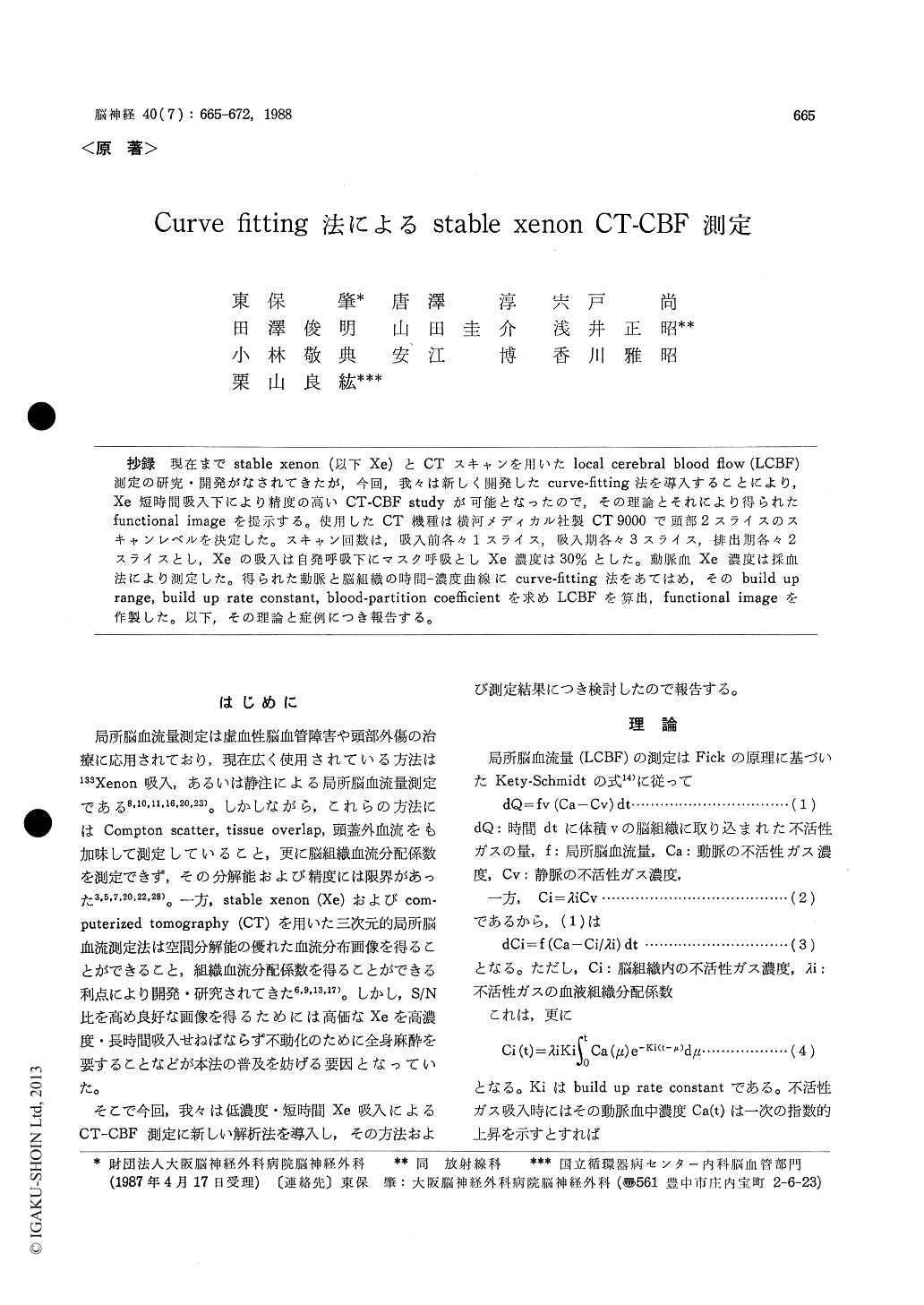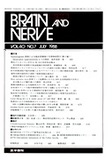Japanese
English
- 有料閲覧
- Abstract 文献概要
- 1ページ目 Look Inside
抄録 現在までstable xenon (以下Xe)とCTスキャンを用いたlocal cerebral blood flow (LCBF)測定の研究・開発がなされてきたが,今回,我々は新しく開発したcurve-fitting法を導入することにより,Xe短時間吸入下により精度の高いCT-CBF studyが可能となったので,その理論とそれにより得られたfunctional imageを提示する。使用したCT機種は横河メディカル社製CT 9000で頭部2スライスのスキャンレベルを決定した。スキャン回数は,吸入前各々1スライス,吸入期各々3スライス,排出期各々2スライスとし,Xeの吸入は自発呼吸下にマスク呼吸としXe濃度は30%とした。動脈血Xe濃度は採血法により測定した。得られた動脈と脳組織の時間—濃度曲線にcurve-fitting法をあてはめ,そのbuild uprange, build up rate constant, blood-partition coefficientを求めLCBFを算出,functional imageを作製した。以下,その理論と症例につき報告する。
Non-invasive methods are described for estima-ting local cerebal blood flows (LCBF) and local partition coefficients (Lλ) during inhalation of 30% stable xenon gas (Xe) in oxygen during CT scan-ning. After the denitrogenation with pure oxygenbreathing, 30% Xe is inhaled for four minutes to minimize subanesthetic effects with a rubber face-mask and the delivery system of Xe. Local time-Δ Hounsfield units curve during the Xe wash-in and wash-out phase is utilized in order to calculate Lλ and LCBF using a least squares curve fitting analy-sis. Calculated Lλ and LCBF with the new me-thod manifested reasonable distribution betweenthe grey and white matters, and reproducibility was excellent in our study. Several case studies of patients with cerebral infarction are presented to demonstrate the characterization of Lλ and LCBF patterns in various tissues and theoretical grounds underlying the new method of curve fitting analy-sis are discussed.

Copyright © 1988, Igaku-Shoin Ltd. All rights reserved.


